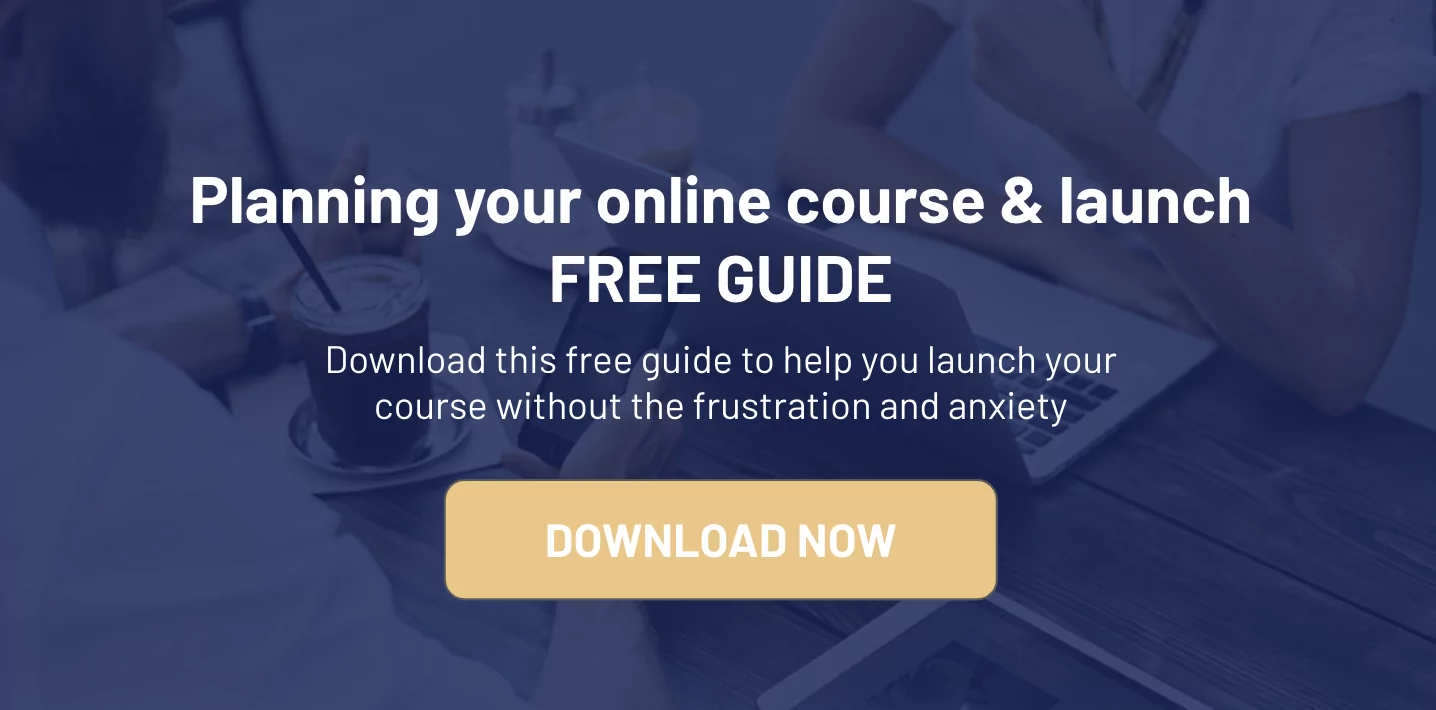If you have a coaching program that you want to put online, where do you start?
From identifying what a digital audience wants, to honing in your content, there are many variables to consider when putting your program online. To help you avoid common pitfalls in the process, we want to give you a roadmap to get you learning the ropes faster.
We talked to course creation expert Michael Marcial, the Founder of the 5-Figure Workweek Program to learn his approach to validating online course programs. Michael coaches entrepreneurs and online course creators all over the world on how to launch highly successful training programs.
Watch this video to learn Michael’s 4-step framework for understanding your audience and validating your course content before launch.
Why validate your online course?
If you’re a coach who already has a training program, you probably already have a sense of what your audience wants from you. But it would be a mistake to assume your pre-validation work is already done.
That’s because not only do people learn differently online, they may be looking for a very different transformation in choosing an online course over a high-touch, one-on-one coaching service.
So, you still need to validate your online course idea. Here are some benefits that come from doing this well:
- Prove market demand. Going through the steps to validate your course will help ensure there are in fact people out there who are ready and willing to pay for an online version of your course.
- Generate revenue prior to launch. There is no reason why you couldn’t earn revenue from interested clients before creating your course. In fact, a number of course creators do this. You’ll learn more about this later!
- Build your list. Properly validating your online course will also help build a pool of prospective clients faster. Whether you’re focused on building your email list or getting more engaged followers in your Facebook group, the validation process will help attract more of the right people into your tribe. And in the same vein, repel the ones who were never going to buy anyway.
Below is the process Michael Marcial goes through with each of his clients, to help them validate their online course.
3 Tactics For Validating Your Online Course Idea
Validating your course is all about getting feedback. Here are some strategies to help you collect the right feedback at the right time:
• Start conversations to ask questions. At this point, don’t worry about trying to exactly segment your audience. Aim to start conversations with your audience wherever they hang out – on social, in person, or in online groups and see what feedback you get.
Start to pick out patterns in the data you receive. Chances are, you’ll be able to identify common themes and issues they are facing. From there, you can start outlining possible solutions you could provide in an online program.
• Send out a survey. Once you have a sense of people’s needs and challenges, send out a survey. Tailor your questions to the themes you picked out in the last step to get more detail around what they may be looking for in a course.
For example, Michael polls his audience across a combination of channels. “I am constantly asking a ton of questions on social media. When it comes time to get more specific and validate a particular program, I always run questions by my facebook group first before opening it up to the general public.”
You could do this by surveying your email subscribers, your most engaged followers on Instagram, or members of your own Facebook group.
• Create a free course. Another way to validate your program is by creating a free course and marketing it to your audience. Based on how many people sign up, you can get a good indication of the demand for your topic. Structuring a free course to feed into an advanced paid course can also work well to build your sales funnel in the future.
In addition to these tactics, Michael also shared the four pillars he goes through with every client. This framework helps ensure the online course is not only aligned with their brand, but also the voice of their target customer.
Related blog: Want even more tips on how to validate your course content? Check out this article for 5 steps to test your online course idea in the real world
To hear more of Michael’s story and how he’s used online courses to grow his business,
watch the video above!
4 Keys To Crafting A Course Your Audience Actually Wants
Step 1: Know who you are and your mission
If people don’t know what you stand for or what your mission is, it’s going to be hard for them to follow the journey you’re on as a coach. This will make them less likely to buy from you. Since coaching is often a face to face service, people want to feel a connection with you before they are going to buy from you.
To help you clarify your message, here are a few questions you can ask yourself:
- What are my values?
- What is my mission?
- What are three words I would use to describe my brand, and my business?
The sooner you start communicating this detail, the sooner your tribe will be able to find you.
Step 2: Know who you’re serving
As a coach trying to stand out in a saturated market, it’s really easy to fall into the trap of talking about the ‘what’ of what you do. If you’re a life coach for example, perhaps you want people to know that you’re certified in a particular coaching method, setting your ability a cut above the rest. While impressive, the only way that message will stick is if you can demonstrate the value of that training for your client.
Do you love working with executives to help them bring more balance into their life? Or do you coach moms on how to navigate the many priorities of parenthood and business? Even though your coaching approach may be similar, the language each client will connect with is very different.
“As coaches, we serve a previous version of ourselves. If you can dial into exactly who it is you want to serve, what point in the journey they are at, what their struggles and fears look like, then your course will speak directly to your ideal client and be worth a lot more to them.”
– Michael Marcial
Step 3: Be very clear on what you’re offering
What does your course look like? What does it include? It’s easy to get lost in all the noise if you don’t provide this clarity.
Being crystal clear on what content your program includes and how it will benefit your client will help you quickly validate its demand.
Let’s say you offer a course for ‘how to grow your community on Instagram’. Coaches on this topic are a dime-a-dozen.
To stand out, you need to clearly communicate your unique mission, who you aim to serve, and how you do it. So instead of the generic messaging above, your key messaging might sound something like, ‘I teach mission-based organizations on how to grow their Instagram community using a proven 8-step framework’. Now the detail of your program is in context, and much more appealing to your target audience.
Step 4: Talk about the result you’ll deliver
Finally, focus on showcasing the results from past clients as a core part of your message and validation process. If you’re already coaching and want to translate your program online, use your past successes and frame them in a way that is relevant to an online coaching audience.
Remember, most people don’t care too much about the ‘what’ of what you offer. They are only interested in your program for the transformation it provides. If they are confident that you are the person to guide them to that transformation, choosing you as their coach will be an easy decision.
Want to learn more about growing your coaching business through online courses? Sign up for our free online event series, Coach to Course Expert Talks, for more free videos and education from leading experts!







